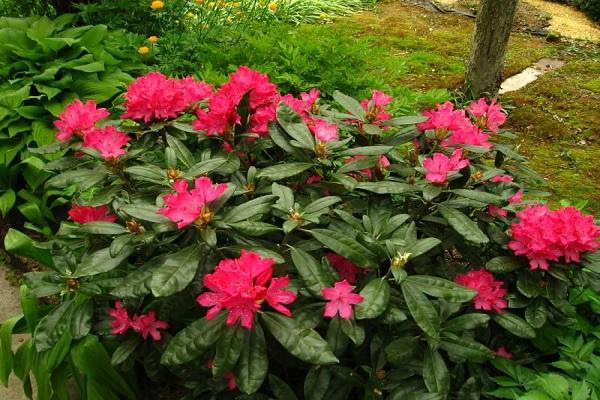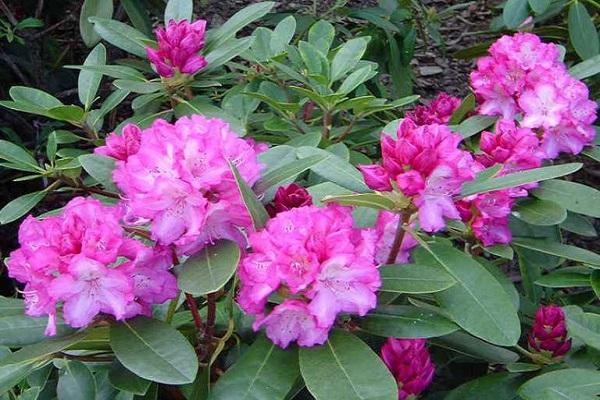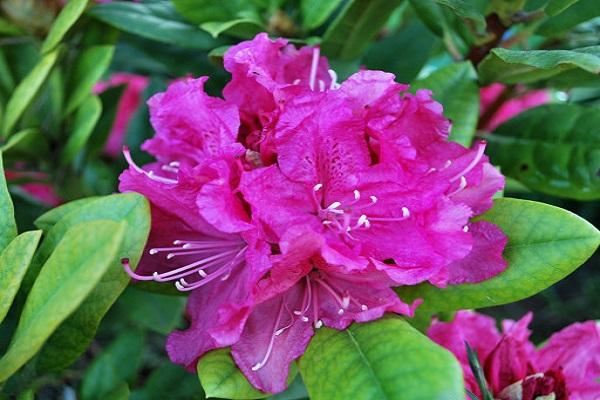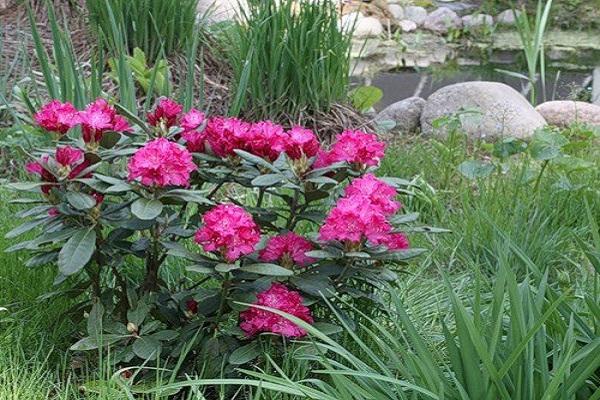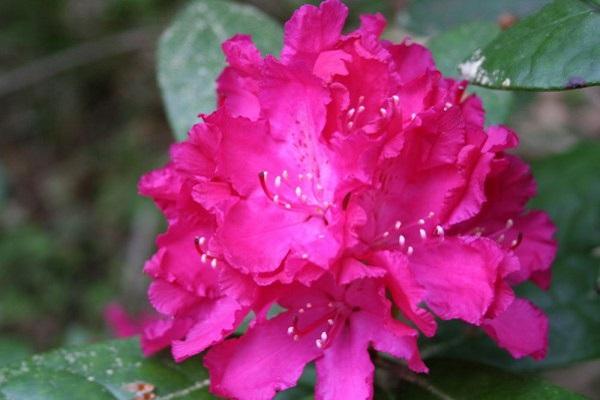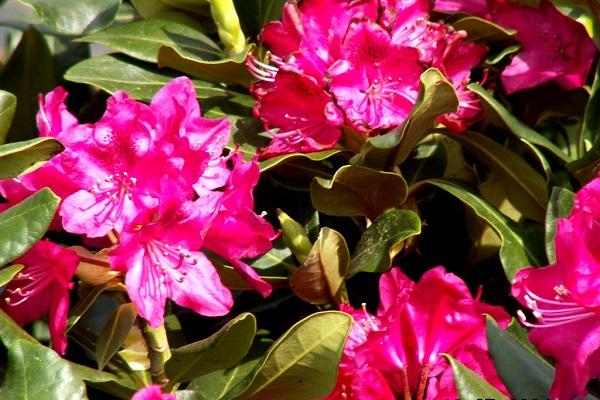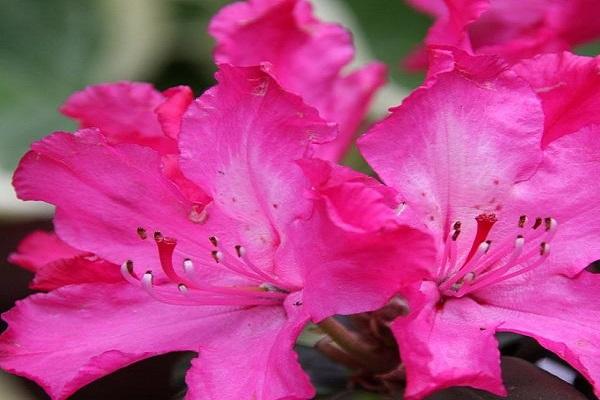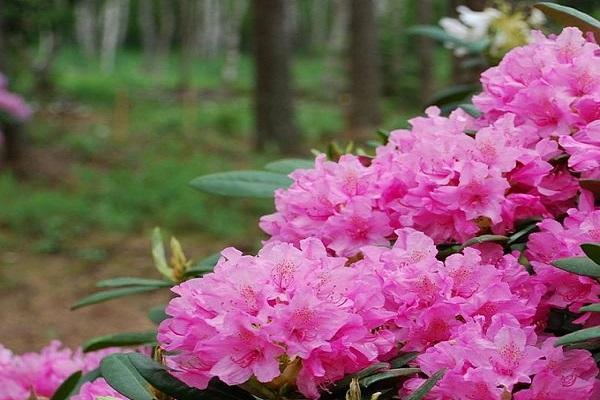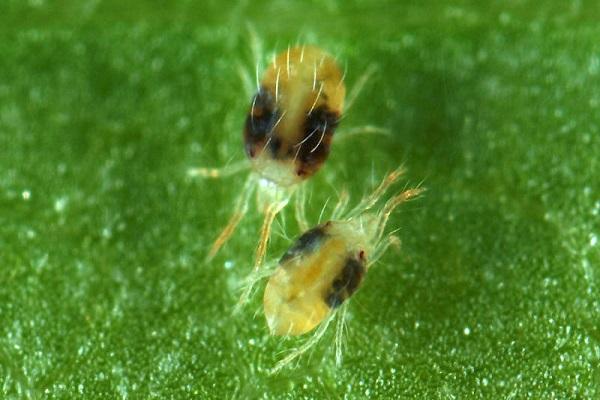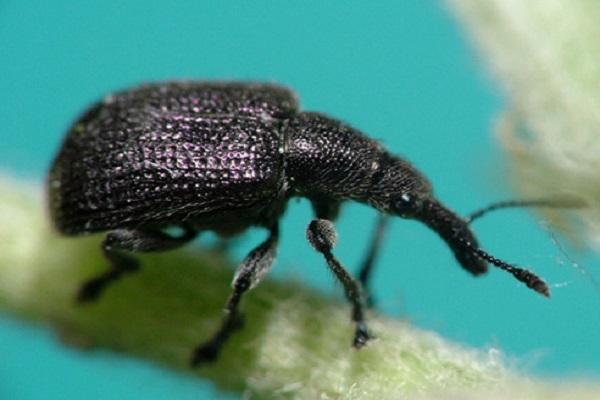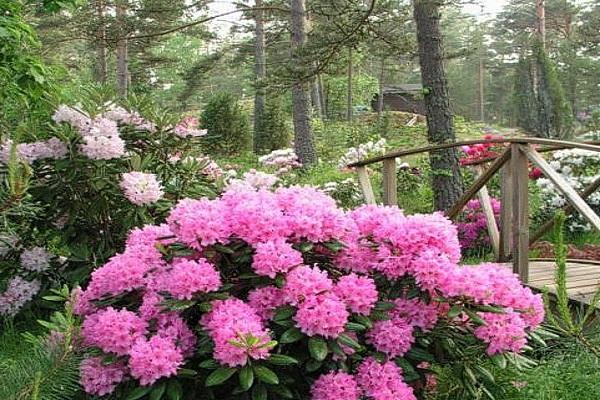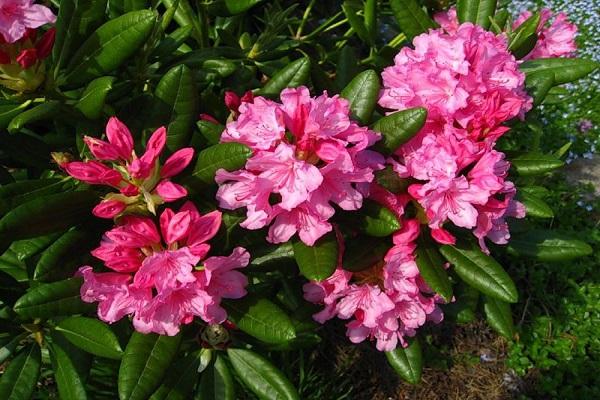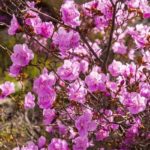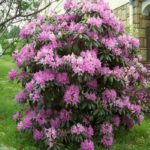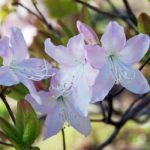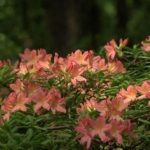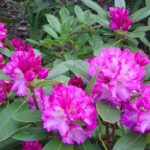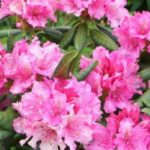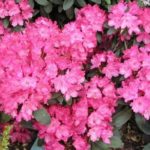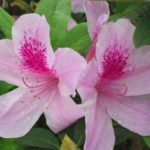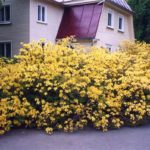Rhododendron is a very beautiful plant, so it can often be seen in summer cottages. Rhododendron variety Helliki has earned a good reputation among summer residents. Its bright flowers will decorate any cottage.
- Brief Definition
- Detailed description
- History of origin
- Distinctive features
- Growing
- Selection of location and soil
- Selection of seedlings and planting dates
- Planting
- Temperature
- Watering
- Feeding and loosening
- Trimming
- Transfer
- Wintering
- Bloom
- When and how it happens
- Conditions of detention
- If it doesn't bloom
- Diseases and pests
- Spider mite
- Snails and slugs
- Weevil
- How to propagate
- Prevention of various problems
- Use in ornamental gardening
- Reviews
Brief Definition
The plant belongs to the heather family.The species is evergreen and frost-resistant. It can grow either singly or in a group of bushes.
Detailed description
Rhododendron Hellikki is a dense shrub with strong branching. Its leaves are smooth on top and slightly pubescent below, dark green in color, elongated in shape.
The flowers are bright violet-red, funnel-shaped, collected in inflorescences of 7-8 pieces. The shelves and shoots are strongly lowered down - this is a characteristic feature of this type of rhododendron. This evergreen plant has a compact form. The height of the bush is on average up to 1 meter, the crown width is 1.2 m.
History of origin
This species was bred in Finland at the end of the 20th century based on the Smirnov rhododendron. The variety received its name in honor of the name of the mother of its creator.
This is one of the most successful experiences in rhododendron breeding, since the Helliki variety differs from other winter-hardy species in its excellent frost resistance and special brightness of flowers.
Distinctive features
Rhododendron Hellika has a number of differences. Grows slowly, prefers slightly shaded places. Feels unwell in direct sunlight and may get burned.
When planting, choose a place so that the plant is protected from drafts. The root of the plant is flat and located close to the surface, so it can be easily damaged. The variety can withstand frosts down to -36 degrees.
Growing
Rhododendron Helliki requires certain conditions for successful growth and flowering.
Selection of location and soil
Seedlings need to be planted in soil with a high level of acidity (Ph from 4.5 to 6.5). The planting location should be chosen in such a way that the plants are protected from direct sunlight and drafts.
Rhododendron of this species does not tolerate high humidity.In order for the plant to delight you with an abundance of flowers next year, you need to promptly remove those inflorescences that have already faded.
Selection of seedlings and planting dates
A young plant intended for planting must be strong and healthy, without visible damage. Rhododendron is planted in open ground in autumn or spring.
Planting
When planting, it is important to place drainage consisting of pebbles and sand at the bottom of the finished hole. The soil is poured to the level of the root collar. Planting should not be too deep. After planting, moisten the soil well. Mulching is done with pine needles and peat. The mulch layer should be 5 cm.
Temperature
When forming buds, the most suitable temperature is +12 - 13 degrees. In the future, the plant will be able to tolerate a sharp drop in temperature.
Watering
Although the plant does not like excessive moisture, the soil should not be allowed to dry out. In summer, watering should be moderate. Water the rhododendron with regular or acidified water. To obtain it, a little sphagnum peat is placed in a bucket of water for a day.
Feeding and loosening
It is necessary to fertilize not only seedlings, but also adult plants. They are fed with a small amount of the following substances:
- Calcium.
- Ammonium.
- Potassium sulfate.
When feeding young plants, the amount of fertilizer used should be less than for adults. In mid-July, fertilizing of all bushes is reduced by 2 times. Compost or humus is used only for adult bushes, mixing them in equal proportions with peat.
Loosening the soil under these plants is extremely undesirable, since the root is superficial and can be easily damaged. It is also better to remove weeds manually. Mulching is a good preventative measure for protecting the roots of seedlings from problems.
Trimming
This procedure is carried out at the very beginning of spring. Pruning is done not only to cleanse the bush of withered shoots, but also for decorative purposes - this is how the crown is formed. To do this, the top part of the tallest shoots is cut off. To avoid infection, the pruning area should be immediately treated with garden varnish.
Transfer
The plant tolerates the transplantation procedure normally. Adaptation to a new place occurs quickly. You cannot replant the plant during its flowering period, or 2 weeks after that..
Wintering
This variety of rhododendron does not require shelter for the winter. Before the onset of cold weather, the plant is well watered and the soil is covered with mulch.
Bloom
During the flowering period, the area looks especially bright. To make it abundant, you need to know a few rules.
When and how it happens
Bright and incredibly beautiful flowers will appear in the first ten days of June. Helliki rhododendron does not bloom for long - only 3 weeks.
Conditions of detention
This species takes root well and lives for a long time even in areas with temperate and cool climates. In 10 years the bush grows up to 1 meter in height.
If it doesn't bloom
Sometimes the flowering of a bush is delayed. This occurs due to insufficient soil acidity. In this case, it is necessary to increase it, and also to feed the plant with additional minerals. For full and timely flowering, diseased, as well as limp branches and shoots must be removed from the plant.
Diseases and pests
Unfortunately, rhododendrons are susceptible to insect pests and diseases:
- Septoria spot.
- Late blight rot.
- Root rot.
- Tracheomycosis.
- Getting wet.
Often the occurrence of these pathologies is associated with excessive soil moisture and low acidity.
Spider mite
The tick is very small, so it is almost invisible. You can judge the damage by the presence of cobwebs on the back of the rhododendron leaves.
To get rid of these parasites, the plant is treated with fungicides such as:
- thiram;
- karbofos;
- agravertine.
Snails and slugs
These mollusks are dangerous enemies of the Hellica rhododendron. They are the ones that most often infect bushes and can destroy the plant in the shortest possible time. They must be manually removed from the bushes. Treatment with molluscicide also helps.
Weevil
The insect feeds on all parts of the plant. A solution of diazonin will help to cope with this problem.
For greater effectiveness of drugs, their solutions should treat not only the plant itself, but also the soil in the tree trunk circle.
How to propagate
Most often, rhododendron is propagated using cuttings. They do this as follows:
- cut off a strong shoot 8-10 cm long;
- plant it in a prepared substrate consisting of a mixture of peat and sand in equal proportions;
- covered with glass or film. The greenhouse needs to be ventilated periodically, providing the young plant with access to air. The seedling will take root within 3 months.
- next spring, the stronger plants are planted in open ground
Seedlings should overwinter in a cool, dry room.
Prevention of various problems
At the beginning of spring, the bushes are sprayed with Bordeaux mixture. If the plant is affected by rot, then you need to immediately cut off the diseased branches. In the case when the bush is completely affected, it must be urgently removed from the site.
A substance such as iron chelate will help avoid the problem of yellowing leaves in rhododendron.
Use in ornamental gardening
Thanks to their green foliage, Hellika rhododendrons decorate the garden all year round. They are especially good in mixed flower beds. Often gardeners plant them next to coniferous plants on the site. They protect the plant while letting in enough light.
Reviews
The popularity of this species is ensured by the fact that it is unpretentious to conditions, easy to care for, and also beautiful.
Vasily Stepanovich, 62 years old
Rhododendrons have been growing on my site for a long time, including the Helliki variety. They tolerate our frosts well and always delight the eye with green foliage, and in summer also with beautiful flowering. I recommend this variety to lovers of flowers in the country.
Lyudmila, 37 years old
I love flowers. I grew rhododendrons on my property. I have always loved them for their beautiful flowers. Last year I planted a new variety, Helliki. The bushes have taken root perfectly, they don’t cause much trouble and really decorate my dacha. I am pleased.

